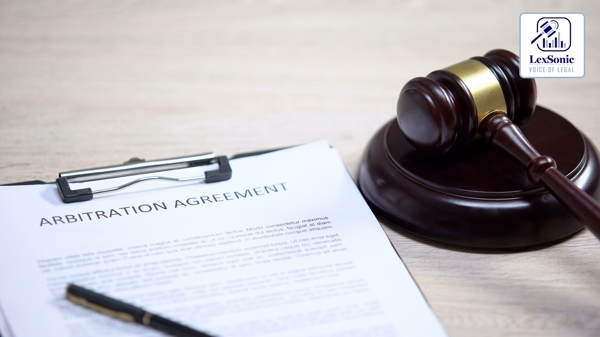Navigating Arbitration: A Landmark Ruling on Rights and Remedies in Commercial Disputes.
26 September 2024
Arbitration Law >> Business & Commercial Law | Consumer Complaints >> Civil & Consumer Law
In a recent legal decision, the High Court addressed a complex dispute involving arbitration and procedural aspects of commercial litigation. This case highlights the intricate relationship between arbitration agreements and the right to defend in civil suits under the Arbitration and Conciliation Act, 1996.
Background:
The case originated from a commercial suit filed by the petitioner, who sought recovery of a deposit made under a Leave and License Agreement with the respondents. The respondents, after failing to appear in court and having the suit proceed ex-parte, sought to set aside the ex-parte decree. The court initially allowed this motion on the condition that the respondents deposit a substantial sum. Following compliance, the respondents filed a subsequent motion seeking to refer the dispute to arbitration, citing the arbitration clause present in their agreement.

Legal Context:
The legal framework governing this case is rooted in the Arbitration and Conciliation Act, particularly Section 8, which mandates that courts refer disputes to arbitration if an arbitration agreement exists. The pertinent question arose as to whether the respondents forfeited their right to file an application under Section 8 after the court had set aside the ex-parte decree.
The petitioner argued that due to the failure to file a timely written statement, the respondents had lost their opportunity to defend themselves in the suit and therefore could not seek arbitration at this stage. This contention was supported by previous case law that emphasized strict adherence to procedural timelines in commercial disputes.
Court's Analysis:
The court meticulously examined the timeline of events, particularly the restoration of the suit following the setting aside of the ex-parte decree. It highlighted the significance of the intervening actions, noting that the respondents, upon restoring the case, effectively positioned themselves to invoke the arbitration clause.
The court also pointed out that the petitioner had not contested the restoration of the suit or the finding of sufficient cause for the respondents' earlier absence. This aspect of finality in the order allowed the respondents to assert their right to refer the matter to arbitration, as the arbitration clause was acknowledged and the issue of whether they had forfeited their right to file a written statement could be addressed by the arbitrator.
Conclusion:
Ultimately, the High Court upheld the trial court's decision to refer the dispute to arbitration, emphasizing that the existence of an arbitration agreement and the necessity of allowing the parties to resolve their disputes through arbitration takes precedence. The court clarified that procedural objections regarding the right to file a written statement could be addressed within the arbitration process. This ruling underscores the judiciary's commitment to uphold arbitration agreements and reflects an increasing recognition of the need for efficient dispute resolution mechanisms. It reinforces the principle that arbitration should be favored in commercial disputes, promoting a collaborative approach to resolving conflicts while ensuring that parties can avail themselves of their contractual rights.
As this case demonstrates, the intersection of procedural rules and arbitration law can lead to complex legal landscapes, making it crucial for parties to be vigilant about their rights and obligations throughout the litigation process.
Arbitration and Conciliation Act, 1996
